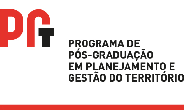Banca de DEFESA: ROBSON DA SILVA MORENO
Uma banca de DEFESA de DOUTORADO foi cadastrada pelo programa.STUDENT : ROBSON DA SILVA MORENO
DATE: 04/08/2023
TIME: 14:30
LOCAL: webconferencia
TITLE:
EMERGING CONCEPTS IN THE CITY AND NATURE RELATIONSHIP: Analyzing the Green Infrastructure of the Zorilda Maria dos Santos Residential Complex, in Suzano-SP.
PAGES: 284
BIG AREA: Ciências Sociais Aplicadas
AREA: Planejamento Urbano e Regional
SUBÁREA: Métodos e Técnicas do Planejamento Urbano e Regional
SPECIALTY: Técnicas de Planejamento e Projeto Urbanos e Regionais
SUMMARY:
Emerging concepts in environmental urban planning and design have been gaining momentum in research and educational institutions, as well as in national and local government agendas. This growth occurs as a response to the increasing urban socio-environmental crisis, which is further intensified by a significant climate change scenario. Emerging concepts refer to methods that aim to provide essential services for the maintenance of human well-being by adopting solutions that mimic natural processes in built environments, thus creating multiple micro-ecosystems. This approach, in the 20th century, was grounded in seminal works and references such as Ian McHarg's book “Proyectar con la naturaleza” (Design with nature), published in the late 1960s. From this constant search for alternative paradigms that placed vegetation as a central element, several concepts have emerged, such as “Urban Forests,” “Low-Impact Development,” “Green Infrastructure,” and “Nature-based Solutions.” These concepts share more similarities than differences and promote practices that prioritize collaboration, experimentation, extensive use of vegetation, and longer periods for proper consolidation. Although green infrastructure and low-impact development have been known and applied for more than three decades in cities and countries in the Global North, this process is still limited in the South. Additionally, some of the experiences implemented here are not properly reported. To support the documentation of experiences in this region of the world, particularly in South America, we analyzed an intervention that took place in Suzano-SP, a city in the Metropolitan Region of São Paulo. Between 2009 and 2013, the Central Pró-moradia Suzanense (CEMOS) housing movement constructed 80 houses through collective effort, while also carrying out environmental recovery of the site where the homes were to be built. This recovery and the conception of the urban and architectural project itself led to an apparent reversal of this area’s degradation. Thus, they constituted structural elements that make up the green infrastructure analyzed in this dissertation. It included the small forest fragment that exists on the boundary of the lots, the reforested riparian strip, a locally protected area under Brazilian legislation and the effluent treatment station, which was built using a hybrid system that also included a constructed wetland, implementation of a community garden, etc. To study this case, this dissertation began with a literature review to construct a theoretical and methodological framework and analyzed this experience as an emerging concept, namely green infrastructure. The components of green infrastructure were analyzed using quantitative methods. Forest fragments including lot boundaries and reforestation areas were monitored using various techniques to analyze their regeneration, species diversity, and the regeneration process. The effectiveness of effluent treatment and the temperature of biotic and abiotic surfaces that cover the residential complex were also analyzed. The results demonstrate the recovery and regeneration of forest fragments, enabling the formation of ecological corridors by reforesting the stream banks and implementing tree planting along the road system. However, despite the sewage treatment system being a low-cost and low-energy consumption option, it requires periodic maintenance, which has not been carried out. The vegetable garden can be expanded and transformed into an agroforestry system, thus increasing the biodiversity benefits observed within the Zorilda Maria dos Santos Residential Complex.
COMMITTEE MEMBERS:
Presidente - Interno ao Programa - 1763487 - SANDRA IRENE MOMM SCHULT
Membro Titular - Examinador(a) Externo ao Programa - 1247586 - ANGELA TERUMI FUSHITA
Membro Titular - Examinador(a) Externo à Instituição - LIZA MARIA SOUZA DE ANDRADE
Membro Titular - Examinador(a) Externo à Instituição - PEDRO HENRIQUE CAMPELLO TORRES
Membro Titular - Examinador(a) Externo à Instituição - Caio Boucinhas
Membro Suplente - Examinador(a) Interno ao Programa - 2265555 - LUCIANA NICOLAU FERRARA
Membro Suplente - Examinador(a) Externo ao Programa - 2548506 - VITOR VIEIRA VASCONCELOS
Membro Suplente - Examinador(a) Externo à Instituição - PEDRO ROBERTO JACOBI - USP




